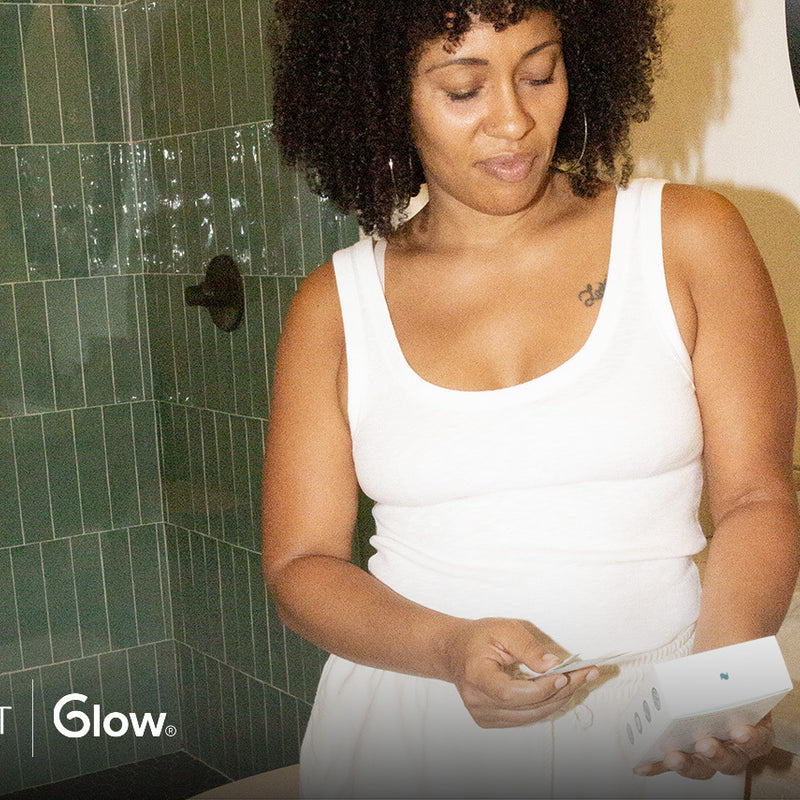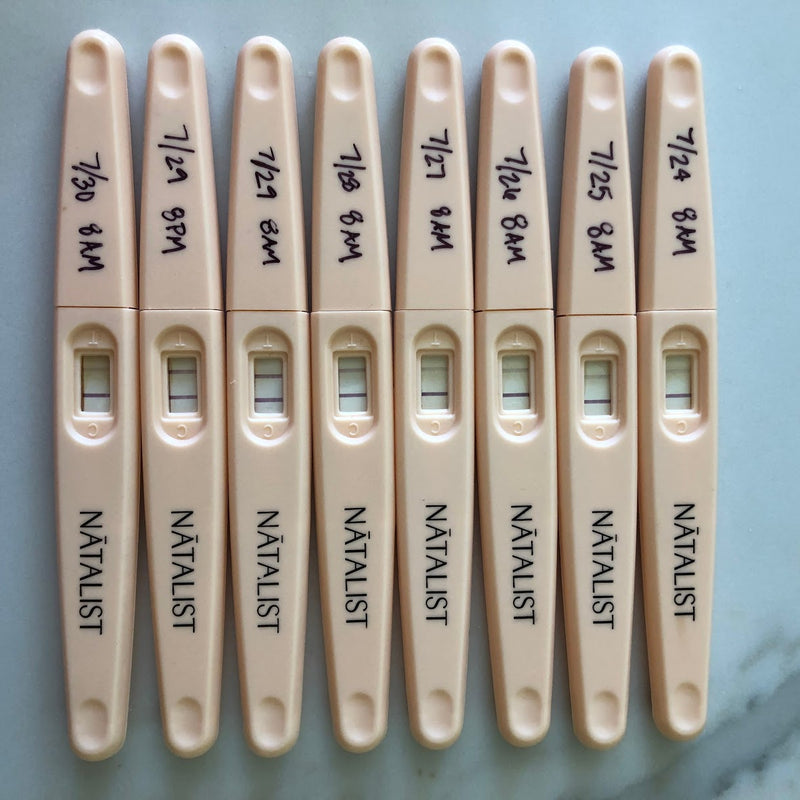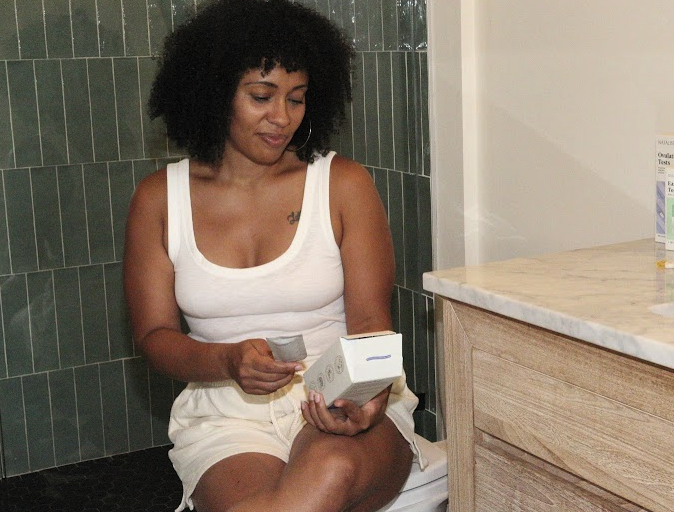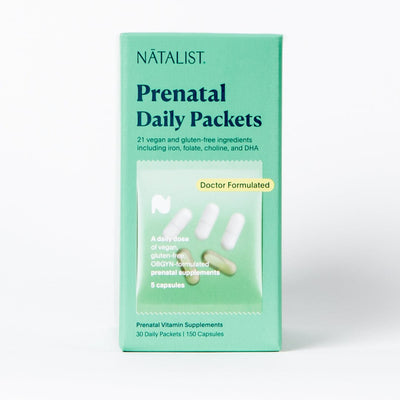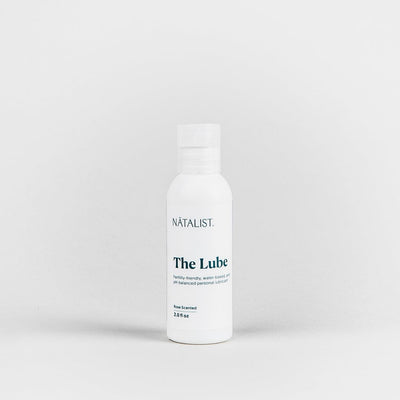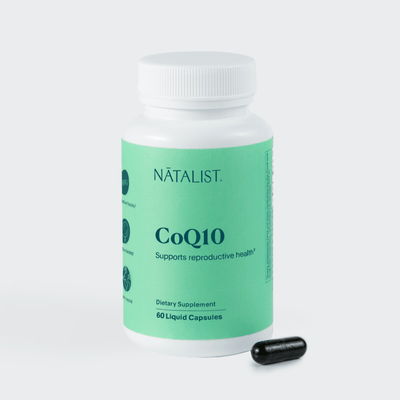The Ovulation Test Cheat Sheet

Originally published 09/17/2019. Updated for accuracy and relevancy on 09/29/2023
Your complete guide to ovulation test kits including when, how, and why you should use them.
Timing is everything when it comes to trying to get pregnant. To increase your chances, you should aim to have sex at least every other day during your fertile window—the period of peak fertility when you are most likely to conceive. Your fertile window is six days in total; it starts five days before you ovulate and ends on the day of ovulation.
There are a few different options available to help find your fertile window: basal body temperature (BBT) tracking and cervical mucus tracking to name a few, but this article will focus on ovulation tests, also called ovulation predictor kits (OPKs) or ovulation test kits. Ovulation tests are a clinically proven, effective method to find the optimal time to conceive. [1-2]
How Do Ovulation Tests Work?
How do ovulation tests work? They identify the presence of a hormone in urine called luteinizing hormone (LH). LH is produced by the anterior pituitary cells in the brain, and they signal to your ovaries that it’s time to ovulate. About 24-48 hours before ovulation, your brain will release a spike of LH called the LH surge. The ovulation test stick can detect this surge in your urine. When you get a positive ovulation test result, you are squarely in the middle of your fertile window, when you are most likely to conceive, so now is the time to take action if you’re trying to make a baby this month.
Who Should Use An Ovulation Test?
Ovulation tests can be used by anyone who wants to make a baby by combining sperm and egg via vaginal sex or intravaginal insemination (IVI) using a home insemination kit. Home insemination kits are often used by lesbian couples wanting to get pregnant using donor sperm purchased from a sperm bank or a friend. They can also be used by a straight couple if the woman experiences pain during sex, also known as vaginismus.
Ovulation tests are also commonly used for home monitoring of ovulation during intrauterine insemination (IUI) cycles, a common first step for couples battling infertility, or for LGBTQ couples using a sperm donor.
If you have a previously diagnosed endocrine or fertility condition, such as PCOS, or are taking supplemental hormones, ovulation tests may not be accurate for you. If this is the case, your hormone levels may be outside of normal ranges so ovulation tests may not give you accurate results. It’s best to consult with your provider first to see if they’re a good fit. Test your fertility hormones at home with this kit.
How and When to Take An Ovulation Test
Natalist ovulation tests come in two types— midstream sticks and test strips, and both come with jargon-free, thorough instructions. The first thing you’ll need to determine is your cycle length. Day 1 of your cycle is the first day of your period; then count the number of days until the day before your next period—that is your cycle length. If your cycle length varies from month to month, choose the shortest cycle length you’ve had in the past 6 months.
Your cycle length will determine what day to start testing for ovulation. Most ovulation instructions provide this information in a table. To give you an example, if you have a 28 day cycle, you would begin testing for ovulation on day 11. You will test until you get a positive result, likely three to four days, but it could be longer if you ovulate late in your cycle. If you’re on the longer side, don’t fret. Some women have longer follicular phases (the first half of your menstrual cycle until ovulation), and this is totally normal.
Most tests recommend testing at the same time everyday, and we do too. It’s probably easiest to do this in the morning, but it’s also fine if you test at another time each day. Just keep it consistent, and try not to drink a lot of water (or any other liquid) right before you test. If you do, it will dilute your urine, and your results may not be accurate. You can help narrow down your potential fertile window with an ovulation calculator.
Types of Ovulation Tests
Ovulation tests come in all different shapes and sizes, but most work the same way: they test for hormones that precede ovulation in your urine, namely LH. Differentiation between them is mostly in cost, accuracy, usability, and design, so keep that in mind when shopping.
There are two main form factors for ovulation tests: midstream and strip. There are some important differences to note, which we've outlined for you.
Midstream tests:
- When using a midstream test, you pee on the test stick directly (hence “mid-stream”). This prevents having to touch a cup of urine.
Strip tests:
- Ovulation test strips require you to pee into a cup first and then dip the test into urine.
- Strip tests often come in larger packs or “ovulation kits” - meaning you can test more for less.
- Test strips use less plastic and are better for the environment
Cassette ovulation tests:
- Similar to strip tests, cassette ovulation tests require you to pee in a cup first. However, with cassette tests you transfer a drop of urine onto the test using an eye dropper.
Midstream tests can be either analog or digital. Analog tests display your results as a line, similar to a traditional pregnancy test. The darkness of the developing test line will tell you if you’re ovulating or not. Digital ovulation tests usually have a small display window that will display your result as a yes/no (or another graphic) to indicate if you are ovulating. Digital ovulation tests (similar to digital pregnancy tests) tend to be more costly and less environmentally friendly than analog ones, not surprisingly, as they contain electronics. Both analog and digital tests use the same basic principle, detecting LH, so the main differentiators between the two are how you’d like to view your results, sustainability, and cost.
Limitations of Ovulation Tests
There are important notable limitations to ovulation tests. One we’ve already mentioned: women who have PCOS or another diagnosed fertility condition may not get accurate results.
If you have a cycle that varies significantly in length from month to month, it can be difficult to know when to test and costly to do so if your cycle length is long. In that case, it may be useful to combine another fertility awareness method with ovulation testing, such as cervical mucus tracking. To implement this, a woman would track her cervical mucus, and when she notices that it is changing into egg-white, fertile mucus, she could begin testing for ovulation. If you are still unsuccessful in tracking ovulation, I recommend chatting with your doctor, OBGYN, or relevant practitioner.
Key Takeaways
- Finding your fertile window when trying to conceive is essential.
- Ovulation tests are a clinically effective way to find your fertile window.
- Ovulation tests do this by identifying a high concentration of LH in your urine, also known as the LH surge.
- Most ovulation tests use this same basic principle, and the main differentiations are cost, usability (form factor), and design.
- Ovulation tests come in 2 main form factors: midstream, which you pee on directly, and strip, which require you to pee into a cup first, and then dip the test into urine.
- Midstream tests can be either analog or digital.
- If you have a diagnosed endocrine or fertility condition, ask your doctor if ovulation tests are for you.
References:
- Su HW, Yi YC, Wei TY, Chang TC, Cheng CM. Detection of ovulation, a review of currently available methods. Bioeng Transl Med. 2017;2(3):238-246. Published 2017 May 16. doi:10.1002/btm2.10058
- Guermandi E, Vegetti W, Bianchi MM, Uglietti A, Ragni G, Crosignani P. Reliability of ovulation tests in infertile women. Obstet Gynecol. 2001;97(1):92-96. doi:10.1016/s0029-7844(00)01083-8







